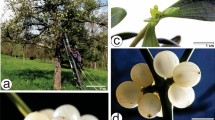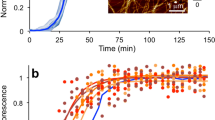Abstract
USING the staining of cell-walls blue by an iodine in potassium iodide solution (0.3 gm. iodine and 1.6 gm. potassium iodide dissolved in 100 ml. water1), many plant species previously designated as containing amyloid in their seeds6 (for example, of the genera Iris, Polygonatum, Narcissus, Hydrophyllum) are excluded, while others show the amyloid reaction with this reagent. The species of the latter group are summarized in Table 1.
This is a preview of subscription content, access via your institution
Access options
Subscribe to this journal
Receive 51 print issues and online access
$199.00 per year
only $3.90 per issue
Buy this article
- Purchase on SpringerLink
- Instant access to full article PDF
Prices may be subject to local taxes which are calculated during checkout
Similar content being viewed by others
References
Mitchell, E. M., Amer. J. Bot., 17, 117 (1930).
Winterstein, E., Z. physiol. Chem., 17, 353 (1893).
Krishna, S., and Ghose, T. P., Indian Forest Leaflet, Forest Research Institute, Dehra Dun, No. 23 (1942) and No. 47 (1943).
Savur, G. R., and Sreenivasan, A., Current Sci., 15, 43 (1946).
Frank, A. B., Jahrb. Wiss. Bot., 5, 161 (1866).
Linsbauer, K., “Handbuch der Pflanzenanatomie”, Abt. II, 2, 10 (1926).
Author information
Authors and Affiliations
Rights and permissions
About this article
Cite this article
KOOIMAN, P. Amyloids of Plant Seeds. Nature 179, 107–109 (1957). https://doi.org/10.1038/179107a0
Issue Date:
DOI: https://doi.org/10.1038/179107a0



